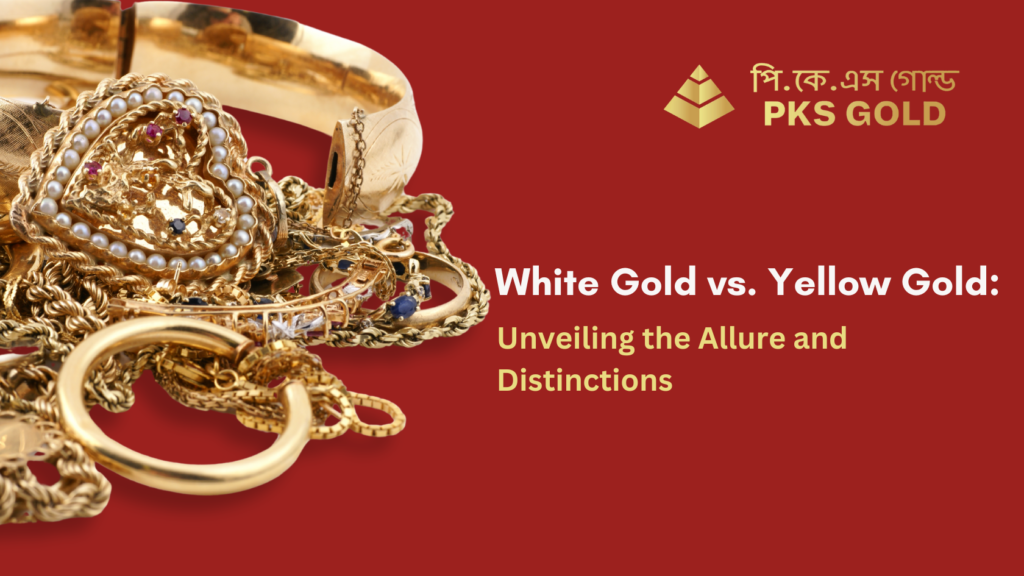In the world of precious metals, gold reigns supreme, and its versatility is showcased through various alloys that give rise to distinct colours. Two of the most popular choices are white gold and yellow gold. In this blog, we delve into the differences between white gold and yellow gold, exploring the unique characteristics that make each type an alluring choice for jewellery enthusiasts.
Composition and Alloying:
The primary distinction between white gold and yellow gold lies in their composition. Yellow gold, in its purest form, is a vibrant, warm hue. To achieve white gold, a mixture of pure gold and white metals such as nickel, palladium, or silver is employed. This alloying process results in a silver-hued metal that bears a striking resemblance to platinum.
Colour and Appearance:
The most apparent dissimilarity is, of course, the colour. Yellow gold embodies the classic warmth that has been cherished for centuries, evoking a sense of tradition and timeless elegance. On the other hand, white gold offers a contemporary and sophisticated aesthetic with its silvery-white hue. The choice between these colours often comes down to personal preference and the desired style of the piece.
Durability and Maintenance:
While both white and yellow gold is durable materials suitable for everyday wear, white gold is often rhodium-plated to enhance its luster and durability. Rhodium is a precious metal that adds an extra layer of protection against scratches and tarnishing. However, over time, this plating may wear off, requiring periodic re-plating to maintain the bright, white appearance. Yellow gold, with its natural colour, doesn’t require additional plating and typically requires less maintenance.
Suitability for Gemstones:
Both white and yellow gold serve as stunning backdrops for gemstones, but the choice can impact the overall aesthetic of the jewellery piece. White gold tends to complement diamonds and coloured gemstones exceptionally well, providing a clean and contemporary setting. Yellow gold, with its warm undertones, pairs beautifully with gemstones like rubies, emeralds, and warm-coloured diamonds, creating a harmonious and traditional look.
Fashion Trends and Personal Style:
Fashion trends and personal style preferences play a significant role in the choice between white and yellow gold. White gold has gained popularity in contemporary and modern designs, offering a sleek and chic appearance. Yellow gold, with its timeless appeal, remains a classic choice for those who appreciate tradition and vintage-inspired styles.
Conclusion:
In the timeless debate of white gold vs. yellow gold, there is no definitive winner. Each holds its charm and allure, catering to different tastes and styles. Whether you’re drawn to the warmth of yellow gold or the modern elegance of white gold, understanding the differences between the two can guide you in making the perfect choice for your jewellery collection. Ultimately, the beauty of gold lies not only in its colour but in its ability to adapt and complement the diverse preferences of those who adorn it.


Useful information